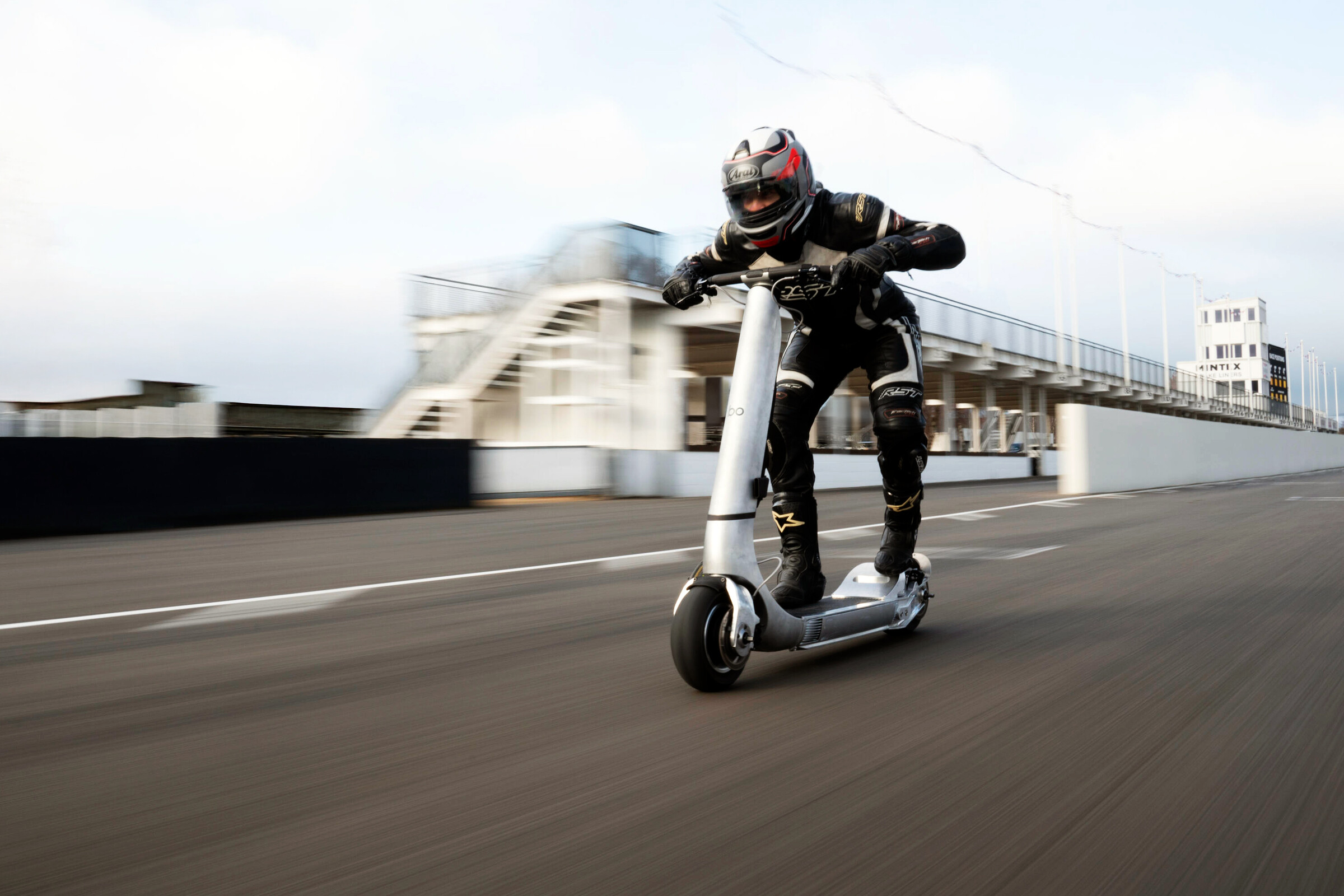Britain’s Turbo Unveils 100-MPH Electric Scooter Benchmark for Urban Mobility

Meet The Turbo: Britain’s Bold Entry to the 100-MPH E-Scooter Revolution
Unveiling a New Benchmark in Urban Mobility
British engineers have delivered a seismic moment in e-mobility with the introduction of The Turbo, a machine that vaults electric scooters into supercar territory. Capable of reaching speeds up to 160 km/h (99 mph), this vehicle firmly redefines the upper limits of what a standing e-scooter can achieve. Drawing upon a foundation laid by teams with deep motorsport expertise, the vehicle’s creators integrated lessons learned from projects like Formula One and land speed record attempts. By virtue of this heritage, The Turbo emerges not as a mere commuter gadget, but as a technological statement—the product of obsessive engineering intent on smashing preconceived barriers surrounding electric two-wheelers.
Powering this exceptional ride are two specialized electric motors that together yield an extraordinary 24,000 W output. This figure equates to a power-to-weight ratio that, remarkably, eclipses even the legendary Bugatti Veyron—an automotive icon in its own right. The design does not rely solely on raw numbers; discipline in balance and stability engineering distinguish the ride experience, resulting in controllability at speeds many petrol motorcycles would envy. Through careful chassis design and innovations such as F1-inspired cooling and braking solutions, The Turbo offers more than headline figures. It combines ferocious acceleration, advanced traction systems, and heat management honed from motorsport’s most competitive environments.
Inside The Turbo: Engineering That Goes Beyond the Ordinary
Beneath its sculpted exterior, The Turbo is purpose-built for serious velocity. Unlike the majority of light electric vehicles typically limited by powertrains designed for urban safety, this machine utilizes an 88-volt battery (1,800 Wh) and robust motor architecture. The twin-motor configuration enables torque delivery that translates directly to instantaneous launches—reports even suggest quicker 0–100 km/h sprints than some sports sedans. The team’s choice to invest in a dual-motor layout, as opposed to a single powerhouse, grants redundancy in thermal management and propels traction into new territory for personal electric vehicles.
Thermal performance emerges as both a design and safety frontier at such output levels. To address this, the British team implemented F1-inspired brake duct inlets and airflow solutions that keep key components in optimal temperature ranges, even at sustained high speeds. The scooter’s frame not only supports its structural integrity but also functions as an active heat sink. These features underscore a no-compromise approach, reminiscent of motorsport prototyping where reliability and performance hold equal weight. For the discerning enthusiast or collector, The Turbo becomes more than a fashion statement—it’s a functional demonstration of high-performance electric hardware pushed to its genuine limits.
Performance, Price, and Position in the Market
In the ever-evolving world of e-mobility, The Turbo’s arrival drops a clear marker. At approximately $30,000, its price bracket stands well above mainstream scooters and in line with exotic vehicles. This figure reflects a focus on craftsmanship, innovation, and exclusivity. For those evaluating electric mobility solutions, The Turbo is not an entry-level option, and even practical city use plays second fiddle to its primary purpose: technological demonstration and performance experimentation. The absence of features like titanium body armor further reinforces its status as a showcase of engineering rather than a daily commuter, allowing the focus to remain on the core innovation contained within its chassis.
The emergence of The Turbo places the United Kingdom firmly on the map of global electric mobility milestones. Integrating engineering tradition from sectors like Formula One and rocket-powered land speed projects, the project signals a new era for high-speed, two-wheel electrification. In technical vocabulary, concepts such as power-to-weight ratio, traction control, dual-motor symmetry, and advanced cooling become essential elements, not marketing fluff. These terms represent genuine advancements, reflecting an industry eager to breach limits previously considered unreachable by consumer or even enthusiast-grade machines.
Implications for the Scooter Landscape and Beyond
The Turbo’s introduction will inevitably shift both the perception and reality of what electric scooters can achieve. Serious mobility engineering now encompasses standing scooters, with boundary-pushing products touching on themes previously reserved for performance motorcycles and hypercars. This development will spark debates around urban transport philosophy, safety infrastructure, and the regulatory frameworks required as the baseline for consumer technology moves dramatically forward. The Turbo transcends novelty—showcasing cross-industry knowledge transfer, where expertise from racing circuits, aerodynamics, and energy management flows directly into the next wave of personal electric vehicles.
As urban centers face new challenges and opportunities from electrification, benchmark machines like The Turbo serve as reference points for what’s possible. They expand the spectrum of electric transportation, inviting not only enthusiasts but also regulators, engineers, and designers to rethink norms and anticipate coming shifts.
Conclusion: A New Standard in High-Speed Personal Mobility
The Turbo, with its record-shattering speed, brutish powertrain, and price to match, marks a pivotal moment for electric scooters and showcases British engineering at its most ambitious. It encapsulates the drive to experiment and compete at every level of power, design, and performance in urban mobility. As technical boundaries dissolve, the market can expect further innovation, greater differentiation, and an evolving dialogue around the role and regulation of ultra-performance e-mobility products.
